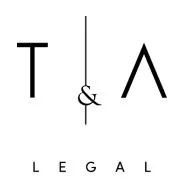- within Government, Public Sector, Corporate/Commercial Law and Tax topic(s)
- with Finance and Tax Executives
- in Nigeria
- with readers working within the Accounting & Consultancy, Media & Information and Retail & Leisure industries
1.0 INTRODUCTION
Taking security when giving a loan ensures that a creditor gets paid in full, he avoids the effects of "paripassu" distribution; that is he has priority over other creditors in the insolvency of the Borrower. Secured creditors have greater options than unsecured borrowers in insolvency. From the Borrower's perspective giving security an incentive for a loan would allow him to borrow at a cheaper interest rate.
2.0 ATTRIBUTES OF A GOOD SECURITY
- A Lender will generally be concerned that the security offered is effective generally (it will motivate the borrower to repay the loan) as well as in the insolvency of the borrower.
- The security should ensure that the Lender takes priority over any other person that has an interest in the secured asset
- It should be one that can be enforced when required, without reference to the Borrower and hopefully the courts (even in an insolvency proceeding).
- The value of the security should be reasonably stable and easily ascertainable, with a sufficient margin for depreciation.
- The security should be readily identifiable in all conditions.
- The lender should be able to obtain a safe, unquestionable title, without any issue or undue expense.
Acceptable assets would usually include land/real estate, plants and machinery, financial instruments such as shares and debt securities, cash deposits, goodwill, intellectual property rights, contractual rights/interests and other intangibles, receivables, ships, vessels, etc.
Common forms of Security are pledges, mortgages, assignment, negative pledges, guarantees/indemnities, trust receipts, set-off. The focus of this paper is on the most common ones - Mortgages (Legal & Equitable) Charges (Fixed & Floating).
3.0 MORTGAGE
A mortgage is a legal or equitable transfer of title as a security for the payment of the debt or the discharge of an obligation for which it is given, subject to a condition that the title shall be re-conveyed if the debt is liquidated. A legal mortgage gives the lender immediate right over the mortgaged property while an equitable mortgage creates a personal right against the mortgagor and, in some instances, requires an order of the court to enforce the right.
KEY ISSUES
3.1 The creation of a legal mortgage over land must be done by deed.
3.2 The equity of redemption implies that unless foreclosure or a sale validly occurs, the security is perpetually redeemable on the payment or discharge of the debt or obligation.
3.3 An equitable mortgage may be by way of deposit of title documents to secure a liability with or without a memorandum of deposit. (different from deed)
4.0 CHARGE
A charge over real estate does not constitute a transfer of title in the charged asset but simply creates a security interest in favour of the lender which can be enforced on the occurrence of specified events. A fixed charge is created over specific property of a company that attaches to the property upon creation. It restricts the company from dealing with the property without the consent of the lender.
A floating charge is an equitable charge on all or any of the company's assets, which fastens upon crystallisation (the happening of a pre-determined event). It allows the company to deal with the assets in the ordinary course of business until an event of default occurs. A fixed charge is created over identified property of a chargor and attaches to the property from the time of its creation. The charge restricts the rights of the chargor to deal with the charged property, without the consent of the party in whose favour the charge is created.
In distinction from a mortgage, the creditor does not obtain legal or beneficial title to the charged asset. What he obtains is an equitable proprietary interest in the asset by way of security. A charge may be created over tangible or intangible assets, including future assets (effective once the asset is acquired by chargor).
5.0 CONCLUSION
Secured lending guarantees repayment. The order in which creditors are paid in a borrower's insolvency is as follows: unpaid contributions to the Employee Compensation Fund, fixed charge creditors (including legal mortgagee), preferential payments, floating charge, unsecured creditors, subordinated creditors and then shareholders.
The content of this article is intended to provide a general guide to the subject matter. Specialist advice should be sought about your specific circumstances.


